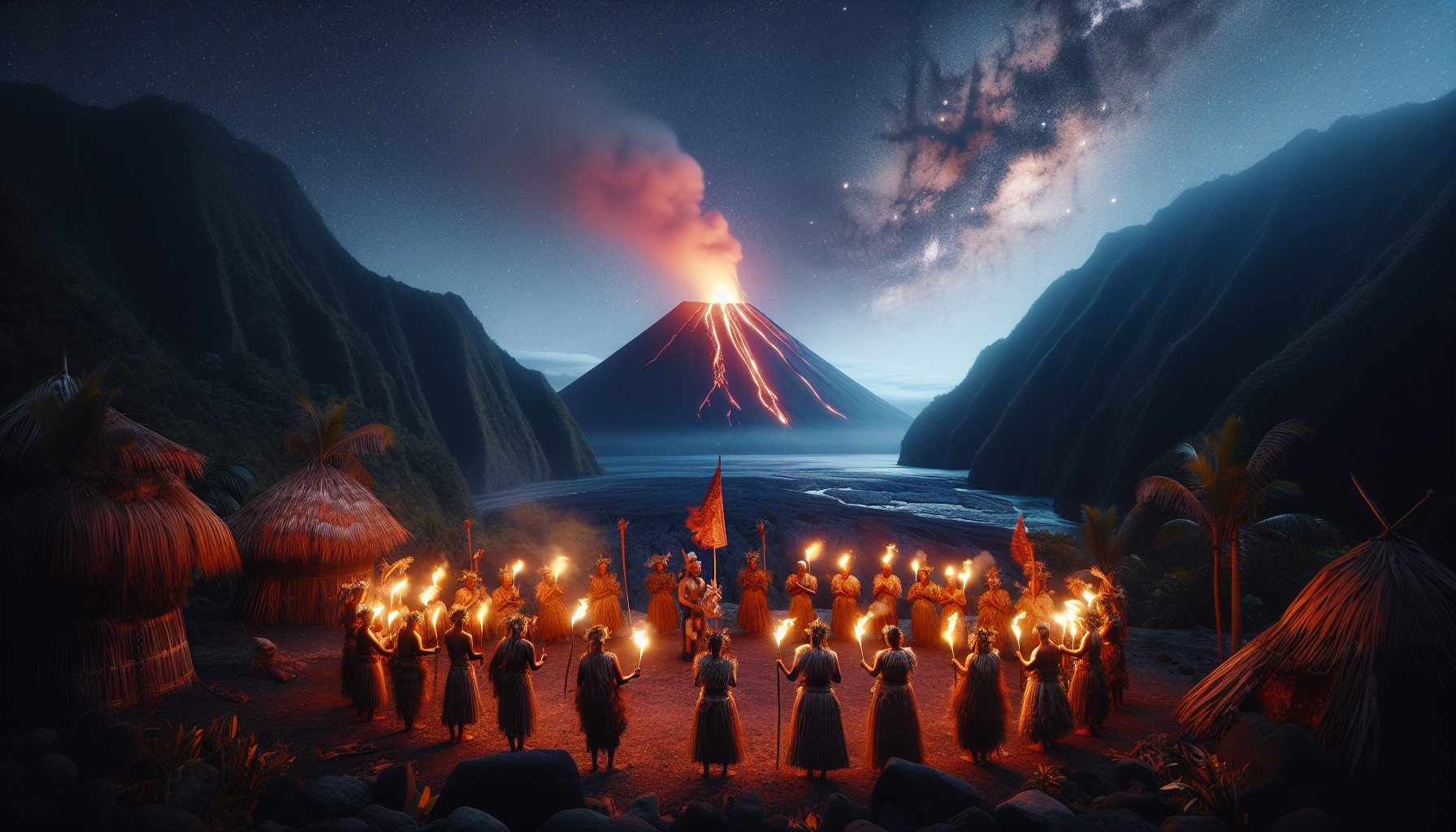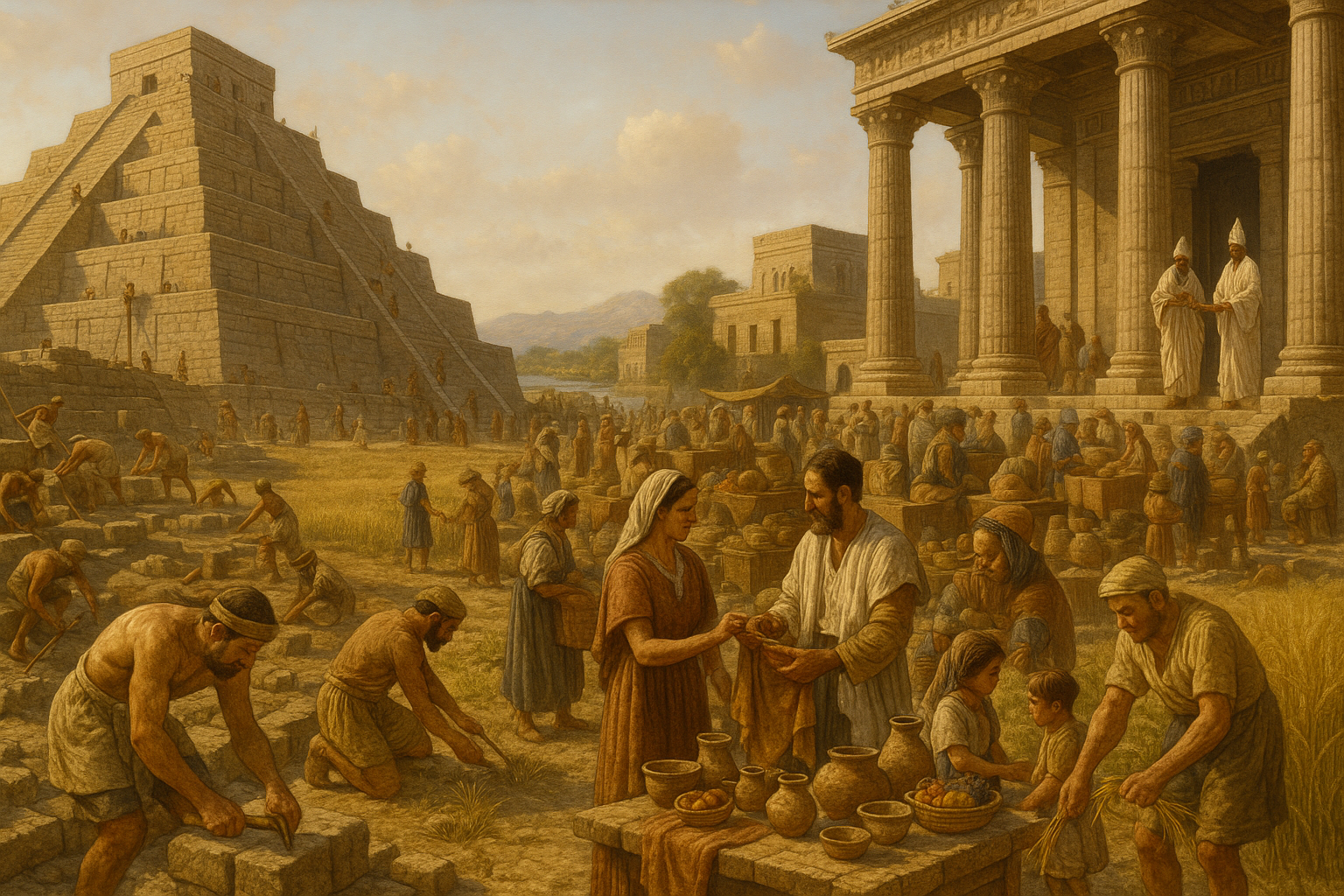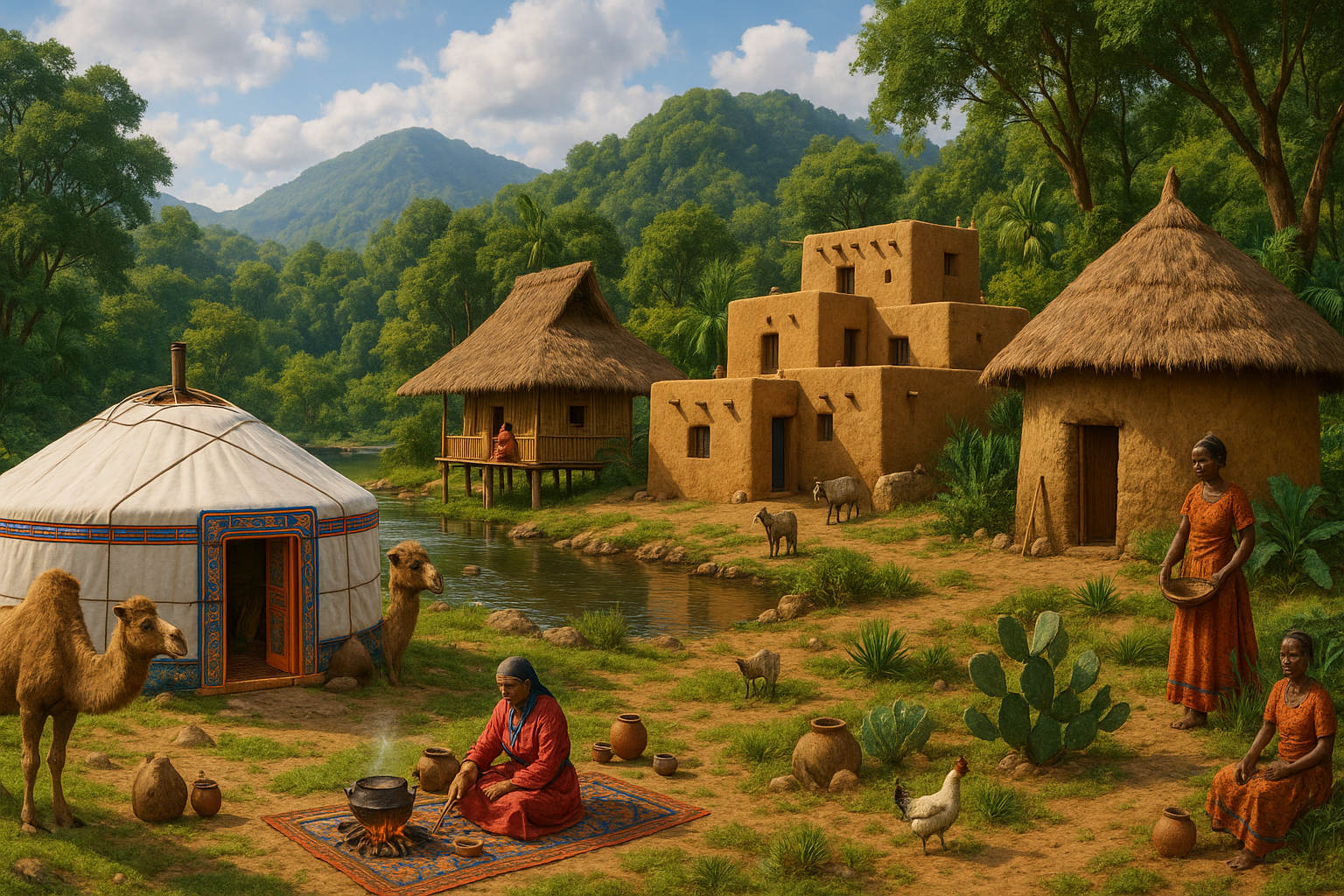In the heart of the South Pacific, a breathtaking and enigmatic tradition unfolds amidst the fiery embrace of the earth’s most formidable forces. Volcano worship, a captivating aspect of the spiritual tapestry of the South Pacific Islands, invites us to delve into a world where nature’s raw power and humanity’s reverence intersect. This exploration unveils the profound connections between the islanders and the volcanic landscapes that dominate their environment, shaping not only their physical world but also their cultural and spiritual narratives. 🌋
Journey through this intriguing tradition as we uncover the legends, rituals, and beliefs that have been passed down through generations. The South Pacific’s volcano worship offers a window into a rich cultural heritage where volcanoes are not merely geological phenomena, but sacred entities that command respect and devotion. From the fiery peaks of Vanuatu to the sacred calderas of Hawaii, the traditions vary, yet all share a deep-rooted connection to the primal forces of nature.
Explore how these communities interpret the capricious nature of volcanoes, often seen as both creators and destroyers. The rituals performed in their honor are as diverse as the islands themselves, ranging from offerings and chants to elaborate ceremonies designed to appease the fiery deities. This intricate relationship between islanders and their volcanic surroundings reveals much about their resilience, adaptability, and spiritual ingenuity.
As we navigate through these fascinating traditions, we’ll gain insight into the symbiotic relationship between humans and nature in one of the world’s most dynamic regions. The stories of volcano worship in the South Pacific not only highlight a unique aspect of cultural heritage but also remind us of the enduring power of nature and the awe-inspiring ways in which humans seek to understand and honor it. 🌴
The Spiritual Connection to Volcanoes
Volcanoes in the South Pacific Islands are more than just geological formations; they are revered as powerful spiritual entities. For many indigenous communities, these fiery mountains are home to deities and spirits that command respect and devotion. The belief that volcanoes hold spiritual significance is deeply rooted in the culture and traditions of these island communities, where oral histories and legends are passed down through generations.
One of the primary reasons for this spiritual connection is the sheer power and unpredictability of volcanic eruptions. These natural phenomena can bring both destruction and renewal, symbolizing the dual nature of creation and destruction. In many cultures, volcanoes are seen as the embodiment of this duality, holding the power to give life through fertile soils and take it away through catastrophic eruptions.
The reverence for volcanoes is evident in the numerous rituals and ceremonies conducted by indigenous people. These practices are meant to honor the volcano deities and seek their protection or favor. Offerings are made, prayers are recited, and dances are performed, all to appease the spirits believed to reside within the volcanoes. Such traditions not only demonstrate respect for nature’s forces but also reinforce the community’s cultural identity and unity.
Rituals and Ceremonies
The diverse islands of the South Pacific each have their unique sets of rituals and ceremonies dedicated to volcano worship. These practices are rich in symbolism and often involve the entire community, reflecting the collective nature of these societies.
In Vanuatu, for instance, the island of Tanna is home to Mount Yasur, one of the most active volcanoes in the world. The people of Tanna conduct a variety of rituals, including the famous “John Frum” cargo cult, which blends indigenous beliefs with elements of Christianity. The cult holds regular ceremonies at the foot of Mount Yasur, where they offer kava, a traditional drink, to the volcano spirits. These ceremonies are vibrant events that involve singing, dancing, and chanting, serving as a means of communication with the spiritual realm.
Similarly, in Hawaii, the goddess Pele is revered as the deity of volcanoes and fire. The native Hawaiians perform hula dances and offer leis to Pele, particularly during eruptions. These acts are expressions of gratitude and respect for Pele’s power, and they are believed to help maintain harmony between humans and nature.
Despite variations in specific practices, a common theme across the islands is the emphasis on harmony with nature. The rituals serve to remind communities of their dependence on and connection to the land, reinforcing the belief that humans are just one part of a larger ecosystem.
Legends and Myths
The mythology surrounding volcanoes in the South Pacific is as diverse as the islands themselves. These stories are not only captivating narratives but also serve as vehicles for cultural values and historical events.
In Samoa, the legend of the goddess Nafanua is a prominent tale associated with volcanic activity. Nafanua is considered a warrior goddess who emerged from the volcanic crater of Mount Matavanu to lead her people in battle. This myth highlights the belief in the protective power of volcanoes and their role as a source of strength and guidance.
Tales of Pele, the Hawaiian goddess of volcanoes, are particularly widespread and rich in detail. According to legend, Pele resides in the Halemaʻumaʻu crater at the summit of Kīlauea on the Big Island of Hawaii. Stories of her travels and battles with her sister Namakaokahaʻi, the goddess of the sea, illustrate the dynamic and often volatile relationship between fire and water, land and sea.
These myths and legends are more than just stories; they are integral to the cultural identity of the islanders. They provide explanations for natural phenomena and reinforce the connection between people and their environment, fostering a sense of respect and stewardship for the land.
Impact on Modern Society
While the traditional practices of volcano worship remain strong, modern society has also influenced how these traditions are perceived and practiced. Tourism, globalization, and scientific understanding of volcanoes have brought new perspectives to these age-old customs.
Tourism has introduced a broader audience to the cultural significance of volcanoes in the South Pacific. Visitors are often drawn to the islands to witness the beauty and power of active volcanoes, and in doing so, they encounter the rich traditions associated with them. Many communities have embraced this interest, offering guided tours and cultural experiences that educate tourists about the local beliefs and practices. This has provided an economic boost to the regions while also helping to preserve and promote cultural heritage.
However, globalization and modernity have also posed challenges to traditional volcano worship. Younger generations, exposed to global cultures and modern lifestyles, may question or move away from these ancient practices. As such, there is a growing effort to document and revitalize these traditions, ensuring they continue to thrive alongside modern developments.
Moreover, scientific advancements have led to a better understanding of volcanic activity, enabling communities to prepare and respond more effectively to eruptions. While science provides explanations and safety measures, it coexists with traditional beliefs, creating a unique blend of ancient wisdom and modern knowledge.
Challenges and Preservation
The preservation of volcano worship traditions in the South Pacific faces several challenges, primarily due to the pressures of modernization and environmental changes. As island communities grapple with these issues, efforts are being made to protect and sustain their cultural heritage.
One significant challenge is the impact of climate change, which threatens the very existence of many low-lying islands in the Pacific. Rising sea levels and changing weather patterns can disrupt traditional ways of life and displace communities, making it difficult to maintain cultural practices that are deeply tied to specific geographical locations.
Additionally, the influence of Western culture and technology has led to shifts in values and lifestyles, especially among younger generations. As more young people pursue education and careers abroad, there is a risk of losing the knowledge and skills needed to perform traditional rituals and ceremonies. To counter this, cultural organizations and local leaders are actively working to engage youth in cultural preservation initiatives, such as workshops, festivals, and educational programs.
Efforts to preserve volcano worship traditions are not limited to cultural activities; they also involve legal and environmental measures. Some islands have established protected areas around sacred volcanoes to prevent environmental degradation and ensure that these important sites remain accessible for future generations. Collaboration between local communities, governments, and international organizations is crucial in these endeavors, as it allows for the sharing of resources and expertise.

Conclusion
Volcano worship in the South Pacific Islands encapsulates a profound cultural and spiritual legacy, deeply rooted in the lives of its indigenous people. 🌋 These traditions, characterized by reverence for the majestic yet unpredictable forces of nature, continue to shape the identity and cultural fabric of the island communities. The intertwining of ancient beliefs with modern life reflects a dynamic cultural narrative that is both resilient and adaptive.
The enduring appeal of these traditions lies in their ability to convey complex ideas about the duality of creation and destruction, harmony with nature, and the power of collective cultural expression. Through vibrant ceremonies, mythical legends, and symbolic rituals, the islanders maintain a living connection to their land and ancestors. The narrative of volcano worship is further enriched by its role in tourism and education, inviting global audiences to appreciate the spiritual significance of these fiery formations. 🌏
However, challenges such as climate change, globalization, and cultural shifts pose significant threats to the preservation of these practices. Efforts to sustain this heritage involve a combination of cultural revitalization, legal protection, and environmental stewardship, highlighting the collaborative spirit of the South Pacific communities. Ultimately, the vibrant traditions of volcano worship not only honor the past but also inspire future generations to cherish and uphold their cultural identity in a rapidly changing world. ✨
Toni Santos is a visual storyteller and experimental artisan whose work explores the strange frontiers where science meets art. Fascinated by the forgotten, the obscure, and the wonderfully absurd, Toni brings bizarre scientific experiments to life through provocative visual narratives and handcrafted creations that blur the line between curiosity and discovery.
His journey is rooted in a passion for the eccentric side of science — from electric shocks on cadavers to botany in hostile environments, from Victorian medical oddities to animal behavior gone rogue. Each project Toni undertakes sheds light on real (and sometimes questionable) scientific ventures that push the boundaries of human understanding.
With a background in visual design and hands-on craftsmanship, Toni blends artistic precision with conceptual boldness. His creations aren’t just decorative — they provoke, disturb, and invite the viewer to reconsider what counts as science, progress, or even sanity. Often inspired by true experiments — like galvanic resurrection, psychological endurance tests, or 19th-century pseudo-science rituals — Toni’s work reanimates these bizarre chapters of history with aesthetic intrigue and critical reflection.
As the creative force behind Vizovex, Toni invites you to explore a world where the strange becomes symbolic, the grotesque becomes beautiful, and every experiment tells a story worth unearthing.
His work pays tribute to:
The brilliant madness of forgotten experiments
The symbolic power of science at the edge of reason
The beauty in questioning what we think we know
Whether you’re a curious mind, a lover of scientific history, or simply drawn to the uncanny, Toni welcomes you to explore a realm where aesthetics and absurdity collide — one experiment, one mystery, one creation at a time.





